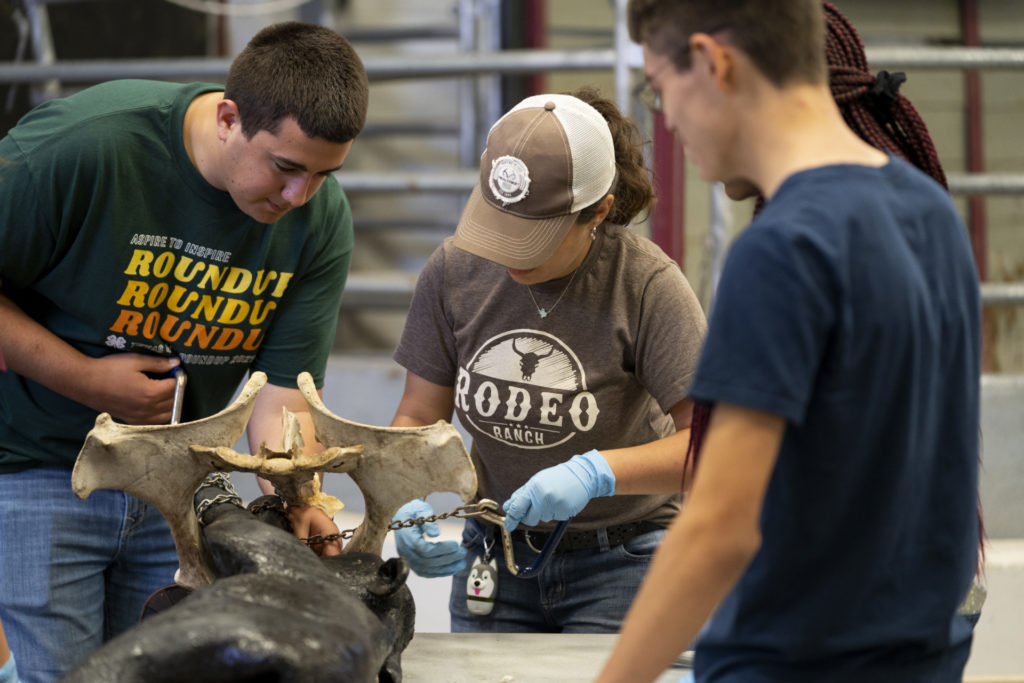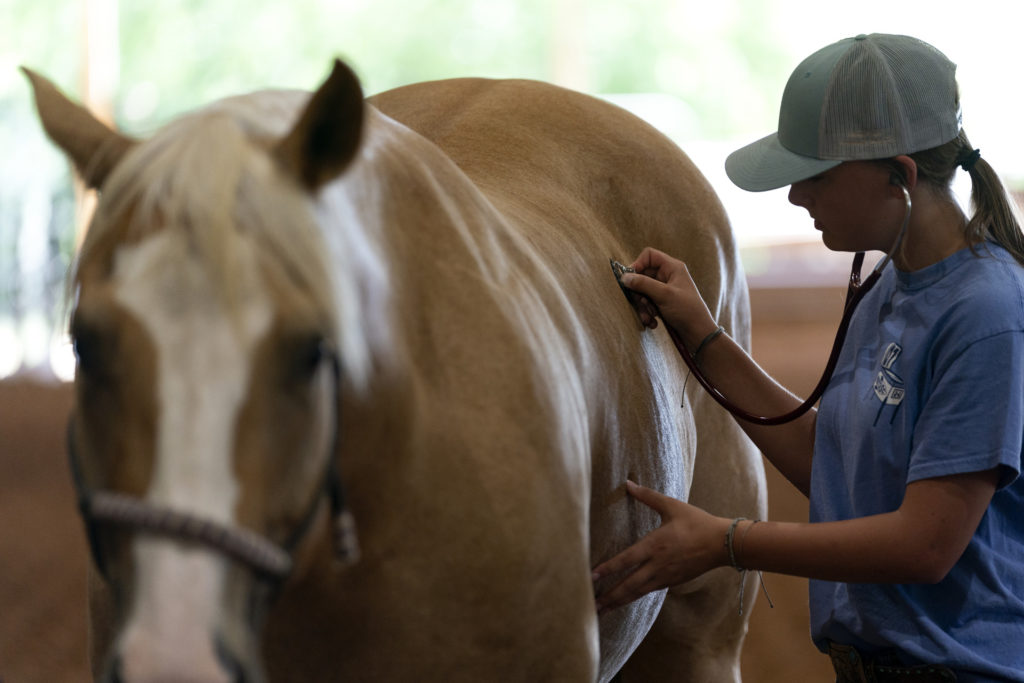Youth get an early start on veterinary science training
Texas A&M AgriLife Extension Service offers veterinary science curriculum online
Tens of thousands of youth have purchased the Texas A&M AgriLife Extension Service Veterinary Science Certificate Program curriculum book as the program’s reputation and popularity spreads from Texas to every U.S. state and as far away as Japan.

The Veterinary Science Certificate Program is a nationally recognized program designed for students interested in becoming a veterinary assistant. Participating students are typically interested in pursuing an associate, undergraduate or graduate degree in the veterinary science field.
Nikki Boutwell, program coordinator in the Department of Animal Science, took leadership of this popular program in July. While Boutwell knows the program is already attracting a lot of attention, she looks forward to restructuring and updating the curriculum as her first tasks on the job.
“I am so grateful for this opportunity, and I can’t wait to provide more events and outreach to today’s youth,” she said.
Boutwell served as a founding member of the Veterinary Science Certificate Program ad hoc working group while starting and running a successful program at Clint High School. She said that provided her with a different perspective and experience than previous leadership “that I hope will help progress the program.”
What the program offers
Students who complete the course can learn the skills necessary to become a veterinary assistant, and upon graduation, earn the title and classification as well as become eligible for certification through the Texas Veterinary Medical Association by examination.
The program is available through participating high school, 4-H and home-school programs or as an independent self-study program, which is utilized by private individuals and military personnel and their families.
But not everyone completes the entire program. Some opt to get the book and make some discovery of their own.
“They are looking for a curriculum about everything veterinary science that can help,” Boutwell said. “Our curriculum can be customized to the student – most students are 13-18, but some start earlier – and it can be used in any setting.”
The curriculum is a broad, STEM-based education, she said, where participants learn about a veterinarian assistant as well as many animal science concepts.
“We work with the credentialing/certifying body, and the students can use this to take the Texas-specific certification, or they can use it strictly as a veterinary science curriculum,” she said. “The idea is that we are guiding them through a robust curriculum toward being a veterinary assistant.”
A growing interest within and beyond the classroom
Boutwell said some students take it as a resume builder to apply to a veterinary technology college or vet school. Since it was organized, she estimates students taking the course through 4-H, schools and homeschools number around 5,000-7,000 or more, and another 1,500 students have opted to take the course through the AgriLife Learn platform online.

The Texas program also offers adult education, including in-person teacher training, virtual open meeting forums via zoom and presentations to agriculture teachers across the state.
“Our program reaches out to vets in all parts of the industry, and we work closely with teachers and county agents to help them teach and implement this program in their area,” she said. “We offer trainings throughout the year, and we introduce the program, what we have to offer, the summer camps, the Skill-a-Thons, the online contests and much more. We talk about how to set up the program from beginning to end.
“The whole idea is to help the teachers offering 200 hours in their classrooms and teach them some of the skills they will put to use in their classroom settings,” Boutwell said.
Historically, the teacher training is in person, and approximately 20-25 teachers attend, she said. But in 2020, when virtual training had to be offered due to the pandemic, they had more than 100 attendees.
“If you are ‘voluntold’ by your administration or new to AgriLife Extension, and if you want to use the VSCP curriculum, you may be asking ‘how do I implement it?’” Boutwell said. “Our training is designed to help implement something they are not a subject matter specialist in and give them the resources to do it in their school.”
Over the years, many teachers have developed workarounds and tons of resources, and these are also shared in our trainings, she said.
Texas-based but worldwide utilized
Over the years, Boutwell said, both the student- and teacher-training programs are gaining popularity across the U.S.
“We offer teacher trainings on the curriculum and know the Rural Minnesota Educators program promotes our Texas A&M curriculum. We also have had a student who went through the clinical curriculum through South Africa and now plans to apply for vet school. One participant from Okinawa, Japan, plans to start a 4-H program on their base.”
Boutwell said she is eager and working hard to make changes and create opportunities for youth education.
“We are working diligently to get this in the hands of as many youth as we can,” she said. “With the changes through the pandemic, many doors have been opened, and it is an exciting time for our program. We continue to create more events and opportunities for students and promote ag education through veterinary science. How awesome that this is what I get to do for a career.”


